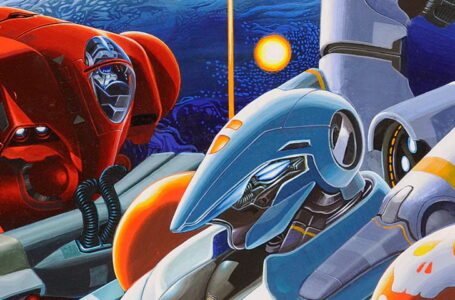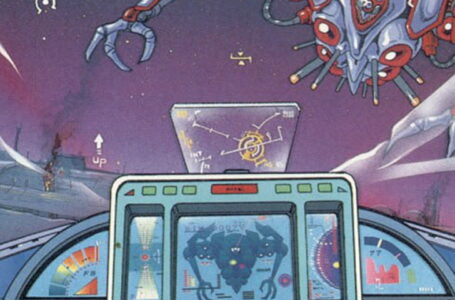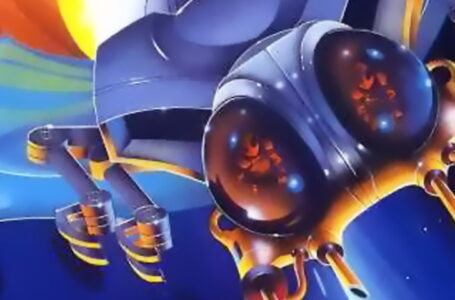Ginga Force: a shoot ’em up with serious longevity
A while back now — before they got really expensive — I picked up a bunch of Xbox 360 shoot ’em ups. Unlike the vast majority of the system’s library, many Japan-exclusive shoot ’em ups on 360 were actually released as region-free titles, meaning they could be played on an unmodified European system. One of those that I grabbed was a double-pack — sorry, “Wonder Pack” — that included two shoot ’em ups by Qute: Eschatos and Ginga Force.
Confession time: I ended up loving Eschatos so much that I never so much as booted up Ginga Force from that collection once — though I was also conscious that unlike the dialogue-free Eschatos, Ginga Force had an ongoing story that I probably wouldn’t be able to appreciate to its fullest without being able to speak or read Japanese. So I was rather excited when Rising Star Games localised it, initially for PC and subsequently for PlayStation 4. (Unusually, they skipped Switch, despite the fact that the Switch has proven itself to be a good home for shoot ’em ups, and could have handled Ginga Force with ease.)
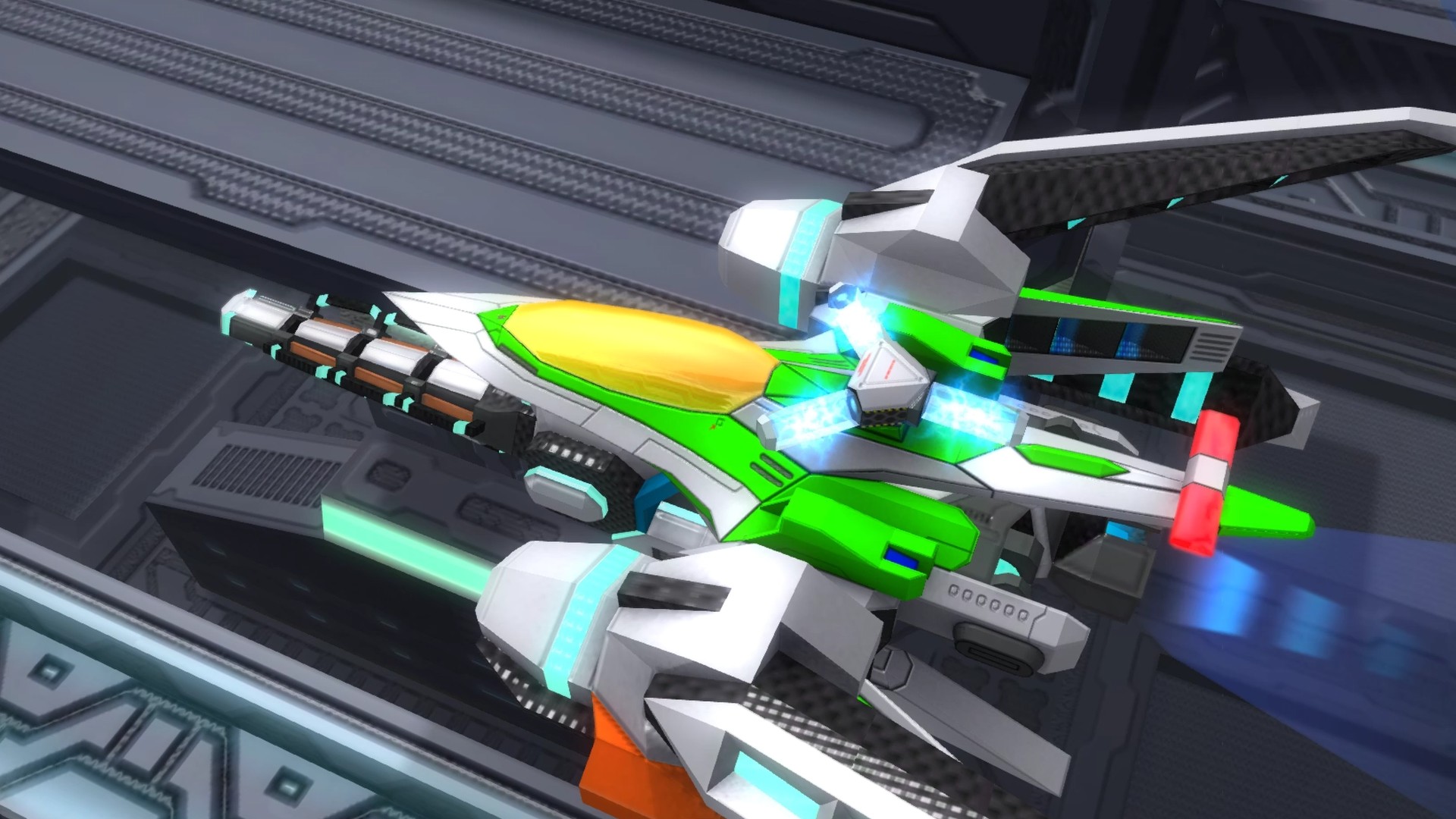
I decided to hold off, though; First Press Games were doing a lovely physical edition of both Ginga Force and its follow-up Natsuki Chronicles, so I figured I’d wait until I could have both localised games on my shelf. It’s not as if I was short of other things to play, after all.
It turned out to be a very long wait. First Press Games seemingly had a few issues along the way putting the releases together, as they’ve only just arrived with me now in June of 2023 — but the wait was well worth it. Like First Press Games’ other releases, the games are presented in beautiful leather-look slipcases to give them the look of classy books, and both come with a surprisingly substantial 60+ page manual, as well as a fold-out achievement guide, designed to be similar to the fold-out poster guides you’d get with some N64 games back in the day.
We’ve talked about Natsuki Chronicles already here on Rice Digital back when it released digitally in 2021, so let’s focus on Ginga Force today — because it’s a wonderful game that any shoot ’em up fan, regardless of skill level, owes it to themselves to add to their collection.
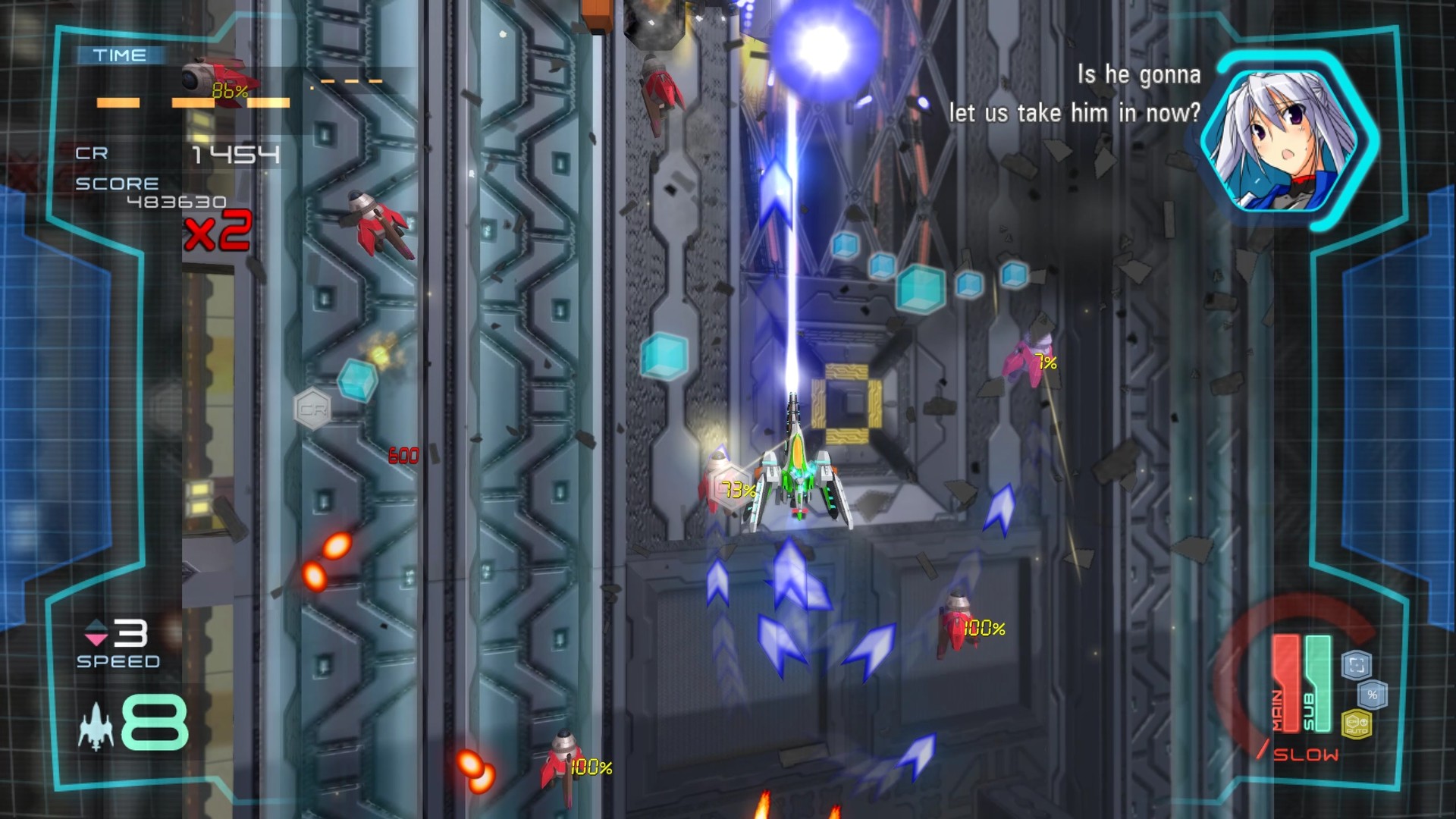
In Ginga Force, you take on the role of Alex, a pilot with the Mitsurugi Security Service. This is an organisation that guards the recently terraformed planet Seventia (sometimes known as Seven Tier) under the auspices of the Magni Corp. Alongside his co-pilot Margaret, Alex’s job is to pilot “Hound 1” to various trouble spots and deal with the criminal element by shooting at them until they explode sufficiently to be taken into custody.
This narrative setup and concept is actually relevant to Ginga Force’s gameplay, because it defines the overall structure of the game. Each of the game’s ten stages is positioned as a single “mission” in Alex and Margaret’s overall tour of duty, and essentially takes the form of a single “encounter” against the criminal they are trying to capture. What this means in practice is that each stage is kind of one big boss fight — albeit one with a bunch of setpieces that must be completed before you can take down your opponent once and for all towards the conclusion of the stage.
For example, in the first stage, you’re chasing down a criminal in a fast ship who is flying dangerously through the skies above one of Seventia’s main cities. While you can take out one of his boosters right at the beginning of the mission, the remainder of the level involves chasing him down and avoiding the various small aircraft he’s launching at you — as well as dodging the serious aerial traffic accidents he causes along the way! It’s not until the end of the stage that you can take him down once and for all.
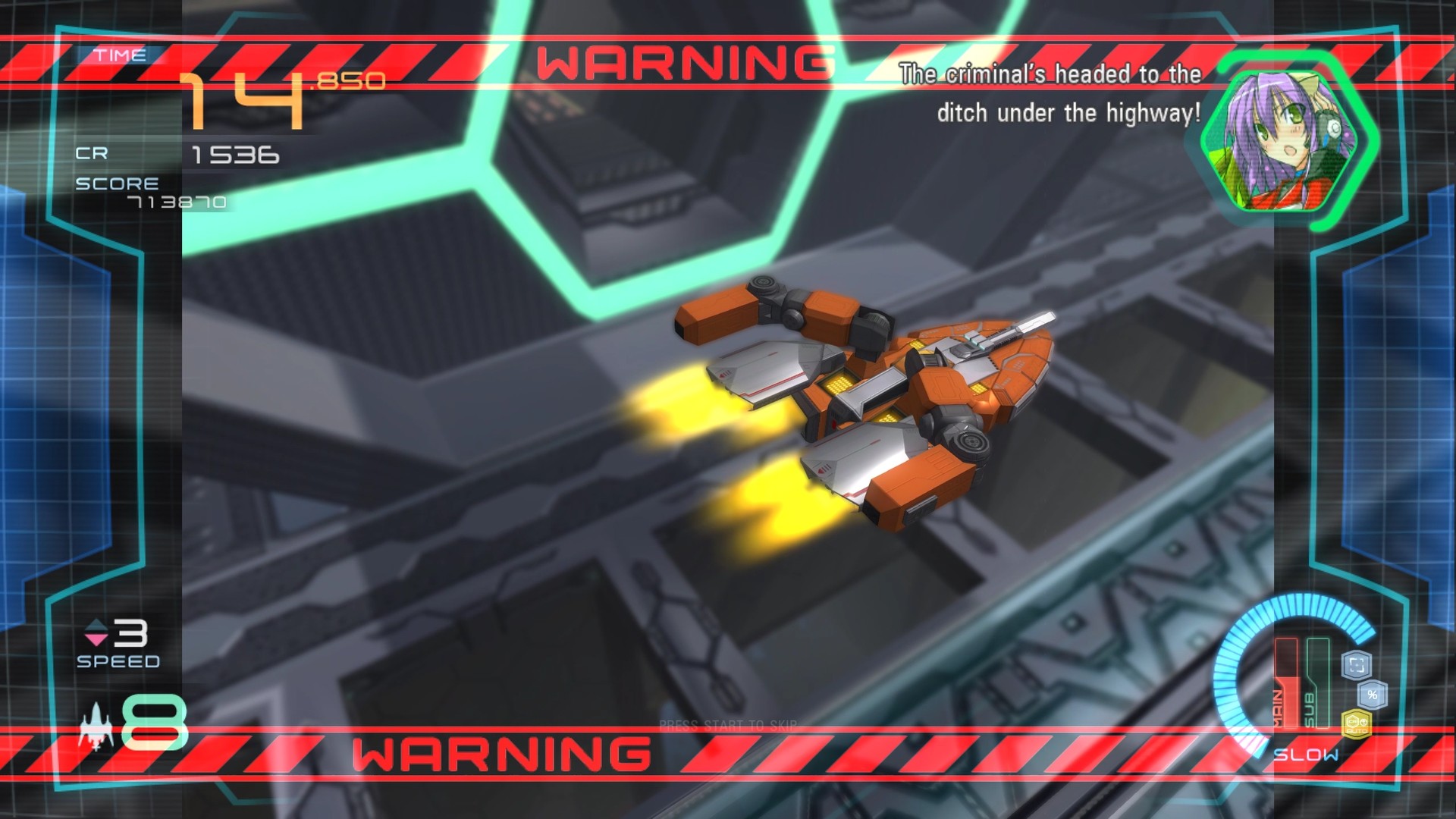
This pattern continues throughout most of Ginga Force’s other stages, but there’s sufficient variety in the encounters that it never gets old. Every enemy has a very different kind of ship that they’re working with, and there are usually some unique objectives to deal with as you approach the final confrontation of each stage, too.
For example, on one stage you’re dealing with a criminal that is attempting to hijack a transport shuttle and steal its valuable cargo. In order to do this, you first have to fly over the shuttle’s surface and take out the small walking mechs that are hampering its performance, then “push” your opponent off the top of the shuttle before finally having a proper aerial battle against him. In another, you’re attempting to stop The Big Bad of the game from launching a powerful battleship; in this instance, you have to take out the ship’s engines one at a time before dealing with the defensive measures along each side.
Ginga Force does a great job of adding context to each encounter through the incidental dialogue between Alex, Margaret and their opponents over the course of each level. This can be easily ignored, but if you do pay attention, there’s an enjoyable (if somewhat clichéd) plot to enjoy over the course of the game as a whole, and this helps give a lot more meaning to the whole experience.
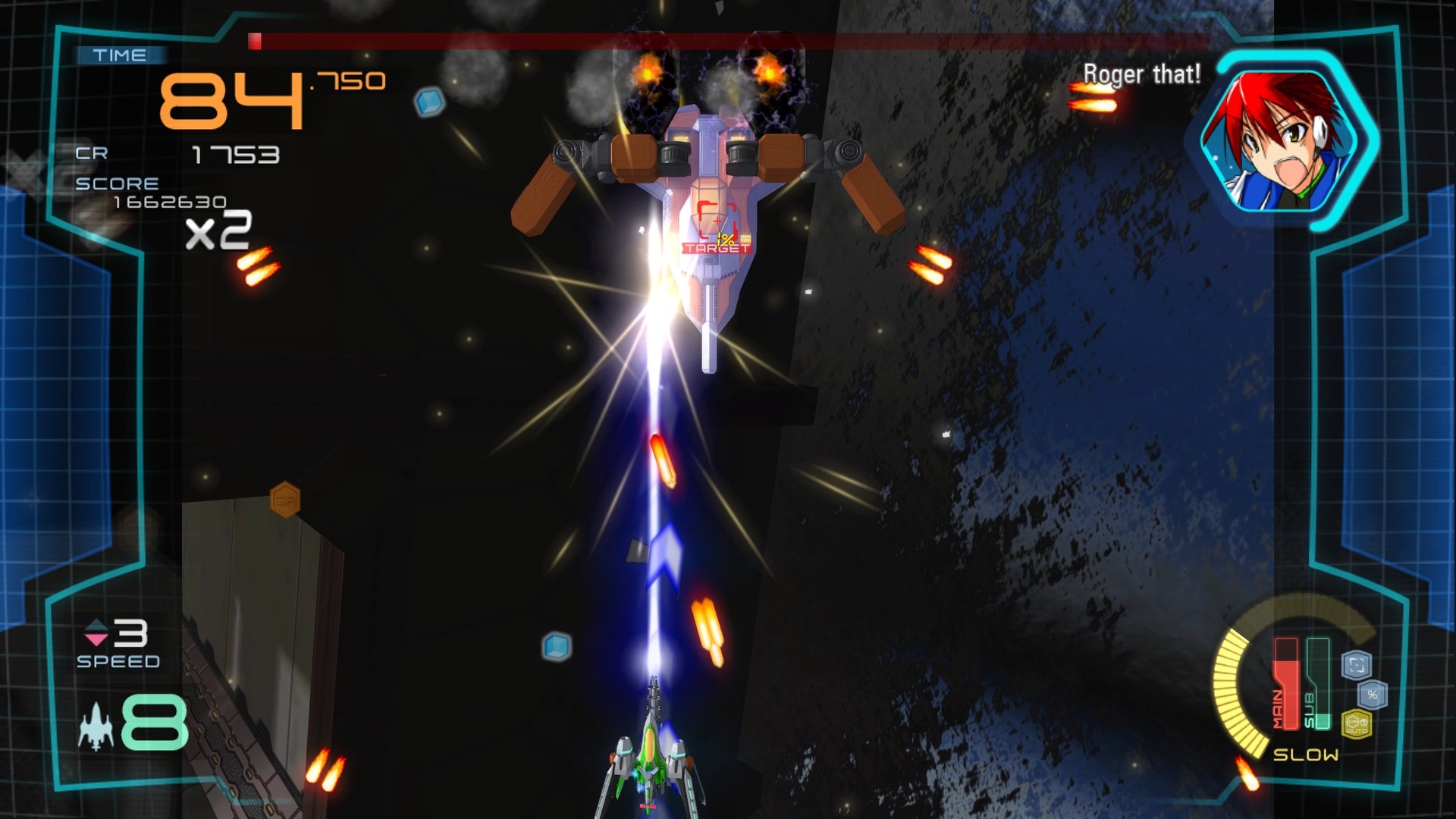
There are also two “Training Simulator” stages to tackle; rather than being tutorial missions, these are arcade-style challenges in which you pick one of three set ship loadouts and then have to deal with either small groups of fairly powerful enemies, or Galaga-style fast-moving formations of popcorn foes. Not only are these great fun, feeling quite like Qute’s first games Judgment Silversword and Cardinal Sins, but they also provide some very useful unlocks.
Where Ginga Force really shines is in its longevity. While in many shoot ’em ups the story mode is an initial attraction designed to allow players to see the game as a whole without having to worry too much about mechanics and score, here in Ginga Force it is very much the main bulk of the game. An arcade-style score attack mode is present and correct, but it’s clear that the focus of the game as a whole is on this story mode, as there’s an admirable amount of depth present compared to many other shoot ’em ups.
This primarily comes from the game’s power-up system. Unlike many other shoot ’em ups, you don’t collect power-ups during stages in Ginga Force; instead, the only collectibles are power crystals that keep your ship’s weapons firing at full efficiency, and credits. You’ll also get bonus credits on completion of a mission, and these can be spent between missions to buy new parts for Hound 1.
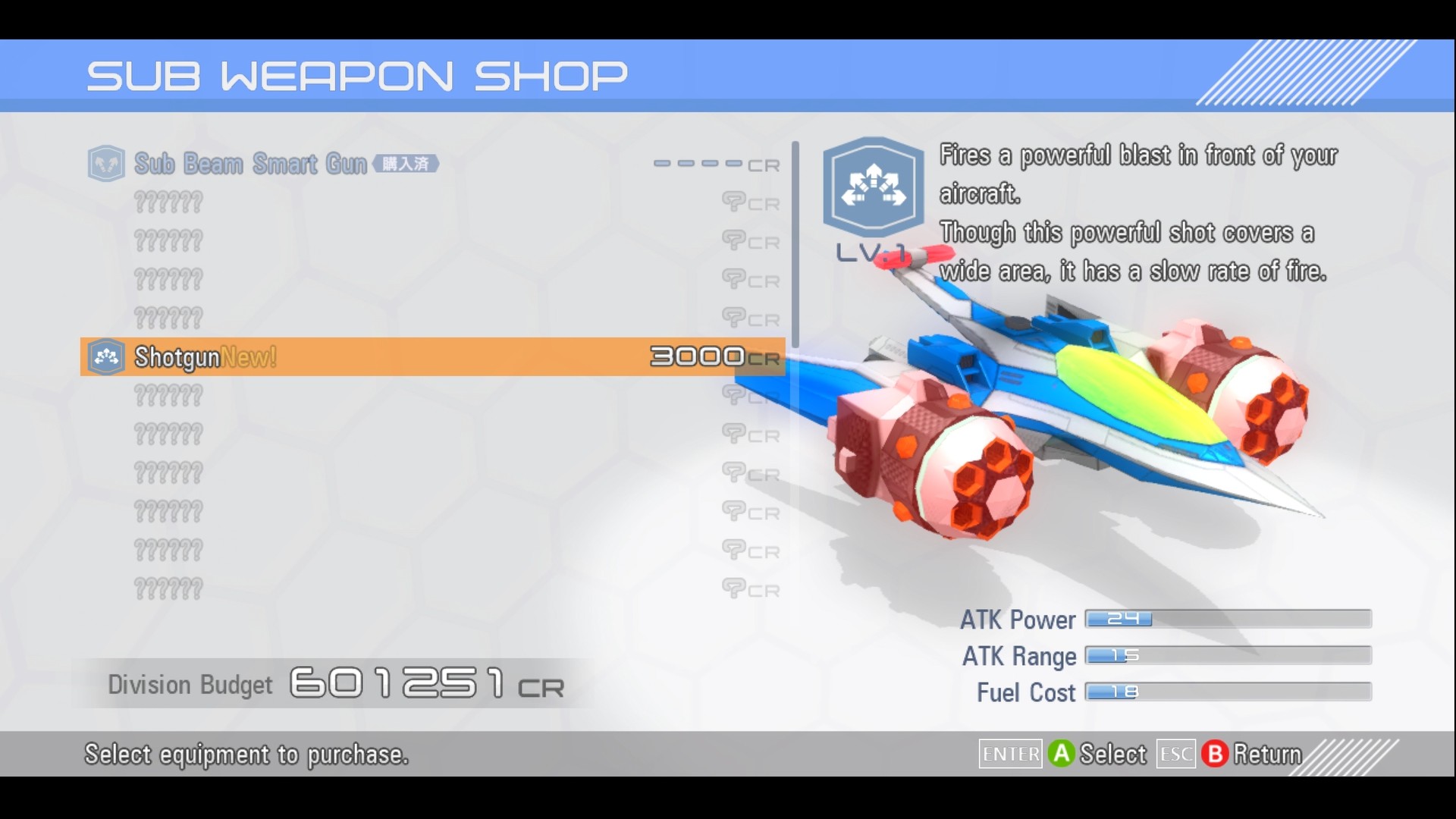
Hound 1 can be upgraded in several ways. The ship’s main weapon is typically a forward-facing, long-range shot, but this can take numerous forms according to which part you choose. By default, it’s a rapid-firing shot similar to the focused shot in Eschatos, but with the right parts you can swap that out for a barrage of powerful missiles with splash damage, a piercing laser, slow-firing but extremely powerful energy blasts and numerous others.
Complementing this is the subweapon. Unlike in Eschatos, this can be fired at the same time as the main weapon, and usually provides some means of hitting targets that aren’t necessarily directly in front of you. Initially, this is a shorter-range spread shot, but can once again be swapped out for numerous alternative options, including homing missiles, a shotgun, a tracking beam, side shots or floating support turrets.
Alongside these two main weapons, you also have a special weapon. By default, this is a shield that attached to the front of Hound 1 similar, again, to that found in Eschatos. This can be upgraded to absorb and fire enemy shots back at them as well as creating a blast if you get hit while it’s up. Alternatively, it can be replaced with a shield that covers the entire ship, a chargeable bomb or even the ability to slow down time. Unlike “bombs” in more traditional shoot ’em ups, there’s no hard limit on how much you use your special weapon; it has a gauge that recharges when it’s not in use.
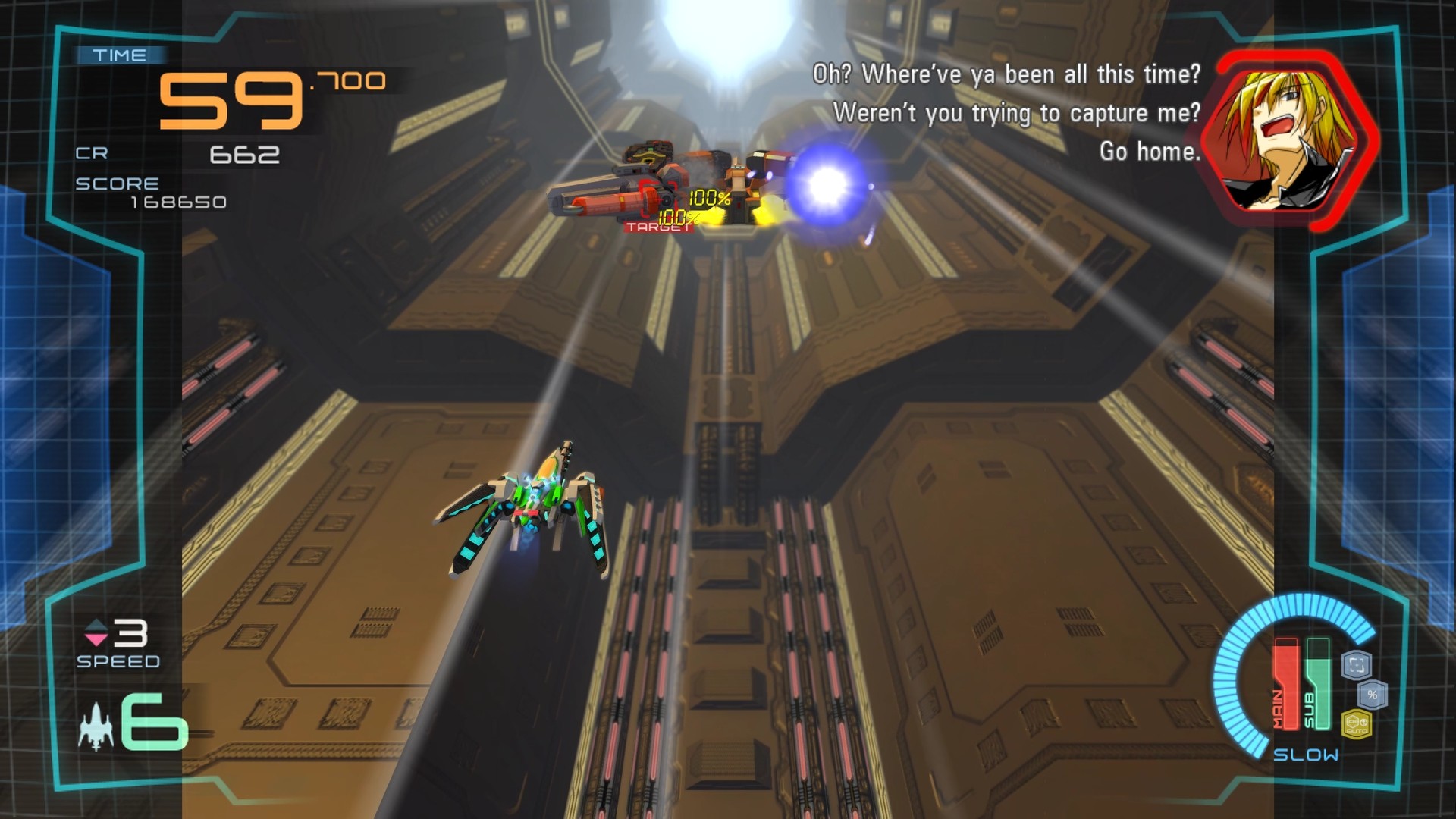
Finally, Hound 1 has three extra item slots than can be used to equip it with various perks, such as more efficient batteries that cause the weapon power levels to decline more slowly, a targeting computer that shows where enemy weak spots are, and a durability display that shows how much damage individual enemies or parts need to take before they are destroyed. There are also a number of specialist items that are particularly useful under very specific circumstances, such as the ability to automatically blast rocks out of the way.
Notably, you don’t have access to all these upgrades and options from the start of Ginga Force; you’ll gradually unlock them as you play. For the most part, an initial playthrough will see you unlock weapons and items that will be particularly useful on the next stage, but there’s no obligation to use them if you don’t want to. Equally, there’s no penalty for doing so, even in the cases where they make things noticeably “easier” — so it’s generally in your interests to outfit Hound 1 appropriately for the mission ahead once you’re familiar with it.
Rather than credit-feeding your way through the game, Ginga Force uses a mostly traditional lives system, and when you run out of lives, you have to start the mission over again. There’s a twist, though; destroy enough enemies in a stage and an extra life item will appear. Not only will this immediately add one to your stock of lives while you’re playing, it will also mean subsequent attempts at the stage will kick off with an extra life in reserve, meaning you’ll eventually be able to brute-force your way through most stages with enough persistence.
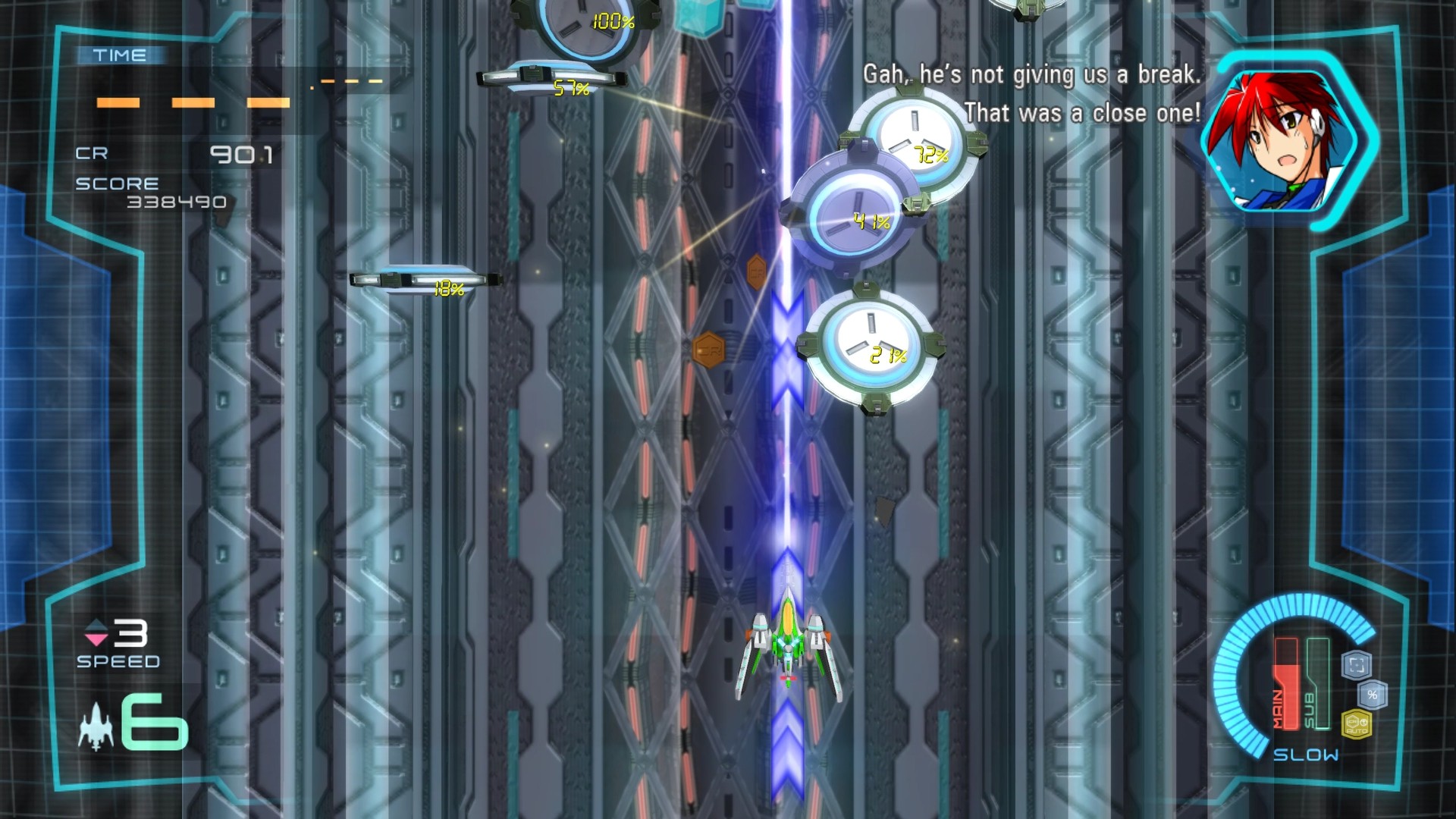
There’s incentive to not do that provided by the game’s score and ranking system, however. You receive bonus points at the end of a stage based on how many times you got hit — the fewer the better, obviously — and the more lives you have in stock, the more opportunities you have to reduce that bonus considerably. If you want to ensure a decent bonus — or just test your skills — you can deliberately disable the extra lives as part of the pre-mission loadout screen, but the choice is yours.
This philosophy of accessibility and customisation runs right through Ginga Force, and it’s a huge part of what makes it so appealing to play over the long term. Trying missions with different weapon loadouts is a joy, and the lives system makes it practical for anyone to at least make it through the main story on the easiest difficulty. There’s incentive to push yourself and try the harder levels too, though, as there are different endings for the harder difficulties, as well as certain ship parts that only unlock at higher difficulties.
Ginga Force really is an excellent game. With well-designed stages, an enjoyable plot with decent voice acting, fantastic music by Yousuke Yasui and plenty of gameplay variety and longevity throughout, it’s one of the best value shoot ’em ups out there, and a great complement to the other excellent titles by Qute. Highly recommended.
Join The Discussion
Rice Digital Discord
Rice Digital Twitter
Rice Digital Facebook
Or write us a letter for the Rice Digital Friday Letters Page by clicking here!
Disclosure: Some links in this article may be affiliate links, which means we may earn a small commission if you make a purchase after clicking on them. This is at no additional cost to you and helps support Rice Digital!
- Letter from the Editor: passing the torch - June 30, 2023
- Super Woden GP 2 is looking promising - June 30, 2023
- Inti Creates is making a 32 bit-style Love Live action platformer - June 26, 2023





